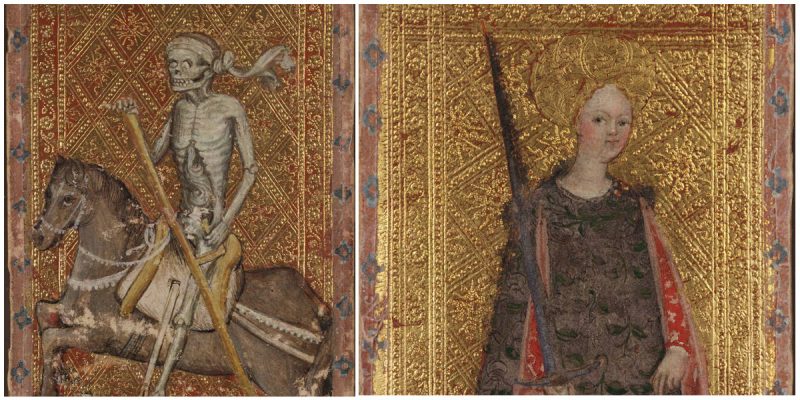The Visconti-Sforza tarot is used collectively to refer to incomplete sets of approximately 15 decks from the middle of the 15th century. The cards are hand painted and appear to have been made for Francesco Sforza about the time that he became Duke of Milan in 1450. They are the oldest surviving tarot cards and date back to a period when tarot was still called Trifoni – 15th-century playing cards with allegorical content related to those used in tarocchi games. They were not made for divination or mystical goals, but for simple gambling.
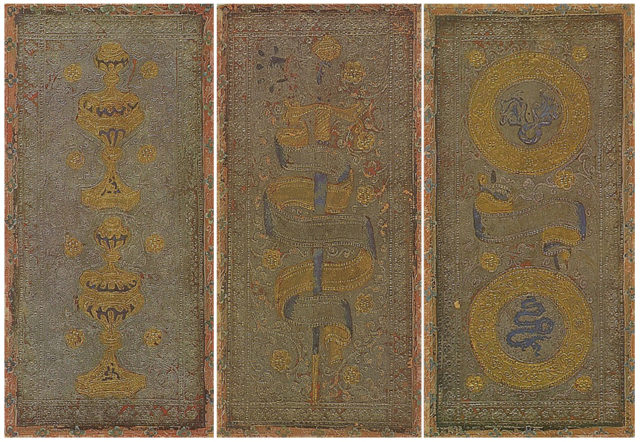
The design of the cards is very beautiful and detailed, the surviving cards are of particular historical interest. There are three particularly famous decks:
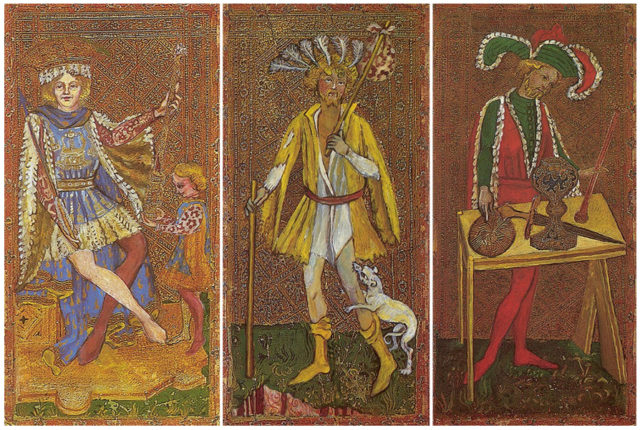
Pierpont-Morgan Bergamo
This deck was produced around 1451 and is also known as Colleoni-Baglioni and Francesco Sforza. The deck was composed of 78 cards but now it contains 74. Two of the missing cards are the Devil and the Tower.
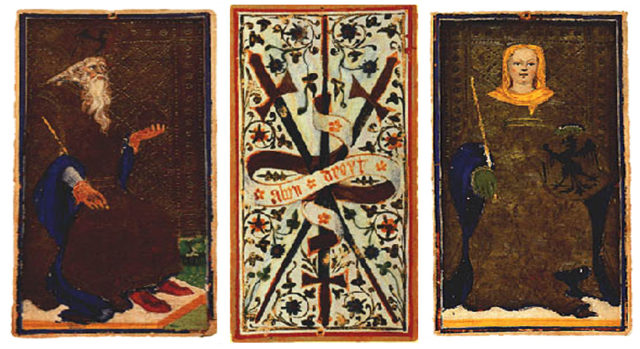
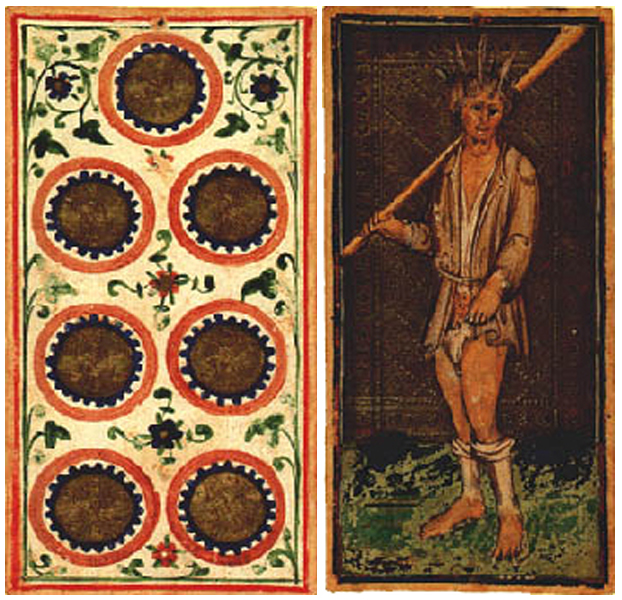
Cary-Yale
The cards were absorbed into the Yale University Library in 1967, they were named after the Cary Collection of Playing Cards. Of the Cary-Yale deck, 67 cards have survived and these cards are the only historical Western deck with six ranks of face cards, as the “Damsel” and the “Lady on horse” supplement the traditional King, Queen, Knight and Jack.
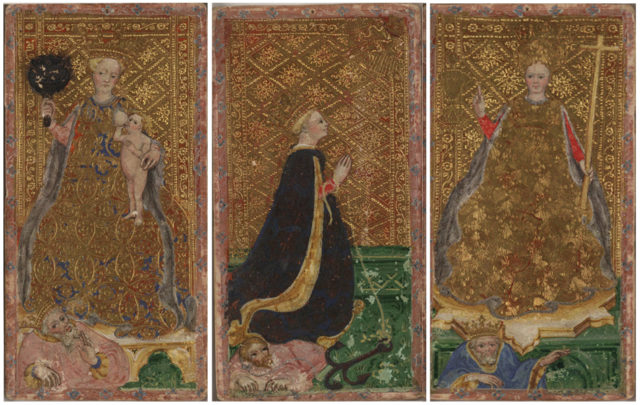
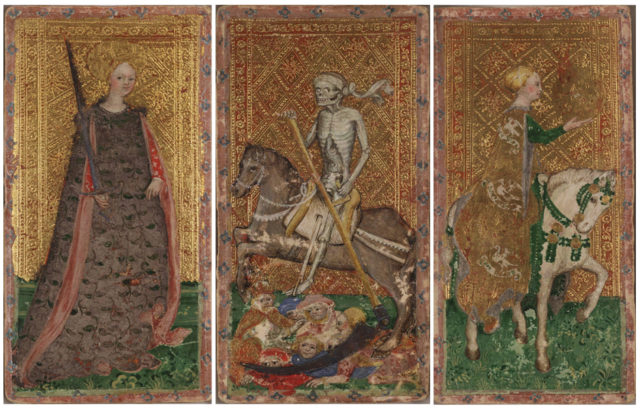
According to the book “The history of tarot” in 2007, the deck was produced between 1442 and 1447.
Brera-Brambilla
The set is named after Giovanni Brambilla, who acquired the cards in Venice in 1900. The deck now consist of 48 cards with only two trumps – the Emperor and the Wheel of Fortune. All face cards have a gilt background, while the pip cards have a silver one.
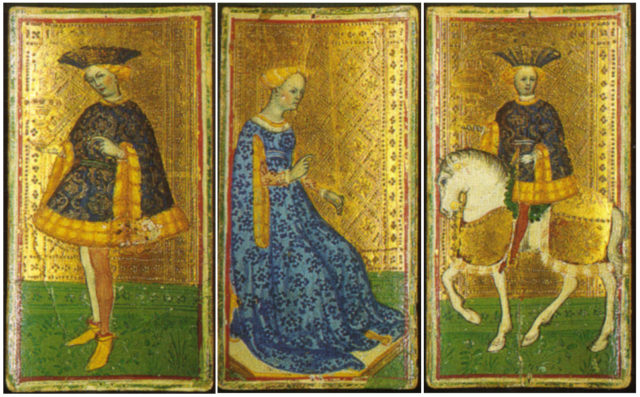
Hand painted packs like this were being produced in Italy and in Northern Europe and they survived because they were expensive and kept as valuable art treasures.
